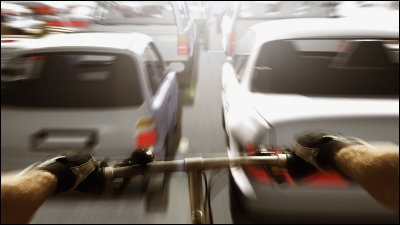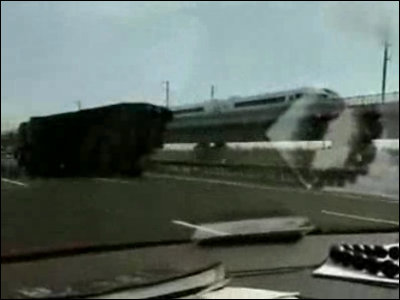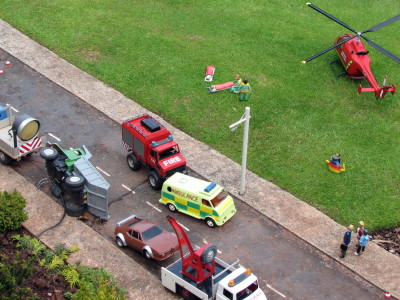What are the actual reasons, causes and workarounds for car congestion to occur?
"Congestion congestionA theory that advocates the theory has been proposed, and a method to avoid traffic jam is devised through various simulations, but in fact the logic can avoid "occurrence" of congestion, but "time to arrive at the destination" will not be early There is also. It is a methodology with a great effect to avoid psychological damage of getting caught in traffic jams, but why traffic jam occurs in the first place, and what is the ultimate countermeasure ... ... Such research results are announced.
How trafficcurrent
http://jliszka.github.io/2013/10/01/how-traffic-actually-works.html

Occurrence of congestion is also a problem in overseas,Open the distance between the cars and travel at a constant speedIn this announcement, the author says, "In this way, the number of useless stops and goes decreases, but the fact that there is no one who will have the time to reach the destination really quick" I am turning my eyes and discussing traffic congestion.
The author's point is that there is an upper limit to the ability "capacity" that a road can handle traffic volume, and it is impossible to pass a number of vehicles exceeding that capacity, which is a cause of traffic congestion It is said to be one of them.

ByDirk-Jan Kraan
In the psychology of the driver, there is a tendency to take "about 2 seconds" between the car and the preceding car, which argues that this has an effect on traffic capacity. The interval of "2 seconds" is the interval between the point where the rear bumper of the preceding vehicle passed through the point and the point where his car passed through the point, about 22 meters in the case of 40 km / h, It is equivalent to a distance of about 56 meters if it is kilometers. Here, we develop this theory with this "2 seconds" as one criterion.
◆ Interrupt
When one car is going to come in from a side lane while driving on a highway, it means that the time it takes for your entire journey will be delayed by "2 seconds". If there is one interruption, another 2 seconds of space will be available, another car will come in that space and another 2 seconds will be taken .... It is also true that there is such an impact on interrupts.
◆ Confluence point for lane regulation
Especially in overseas, if there are lane restrictions in front and the lane decreases, the driver may be instructed to break into the row after proceeding to the merge point. This is certainly a meaningful thing in terms of safety in that it does not unnecessarily lengthen the row of traffic congestion, but this method has no effect in terms of shortening the total time.
◆ Catastrophy theory
The "2 second interval" mentioned above is an interval to the last from the front end of your car to the rear end of the preceding car, not that the car will pass every 2 seconds. "Distance equivalent to 2 seconds" + "length of car" will be the actual space occupied by one car. This is not a problem, for example, if you are running at a high speed on a highway, but as it will be slow like ordinary roads, it will affect the results. I link this phenomenon with "catastrophe theory" and explain the influence of the distance between vehicles at low speed.
If there are no cars in the vicinity, the driver can run at any speed. However, as the number of cars (Occupancy) increases, the traffic volume (Flow) also increases, and when the quantity of the car reaches a certain level, it is impossible to suddenly keep the speed kept until then I will. This is the cause of traffic congestion at low speed.

Demonstration
Here, the author calculated the model of the theory using a computer and compared it with the actual traffic data. In that case we used the code below to evaluate the impact of "number of cars" on "traffic volume" and "speed".

The result is here. For the results calculated by the above computer, the graph below shows the results of the actual survey by the US / Federal Road Management Authority, showing a certain similarity between the theoretical result and the actual data I will.

Here is another data which compared also. It shows the relationship between 'traffic volume' and 'number of cars'. When the number of cars exceeds 1 point, the result shows that the traffic volume decreases.

And, the conclusion is ...
The ability of a road to handle traffic volume is synonymous with the number of cars running thereBased on the conclusion that I'm trying to keep the distance between vehicles and not to make "waves of traffic jam" (= reduce stops and go)), while suppressing the occurrence of traffic congestion itself, the flow of the car It discusses the opinion that it does not have much influence on the goal of getting better and arriving early to the destination. Rather, such actions are said to increase the space occupied by their cars on the road, which in turn will result in a longer row of traffic congestion.
The conclusions of the author derived from the above are the following four.
1. Take a short car
2. Do not interrupt
3. Do not ride the car in the rush hour
Four. Living in a city where a car is unnecessary
In a sense, it is the conclusion of the impact, but also from automakersOne-passenger ultra-compact carIt may be a way of thinking that is helpful for considering future mobility, such as being proposed.
Related Posts:








